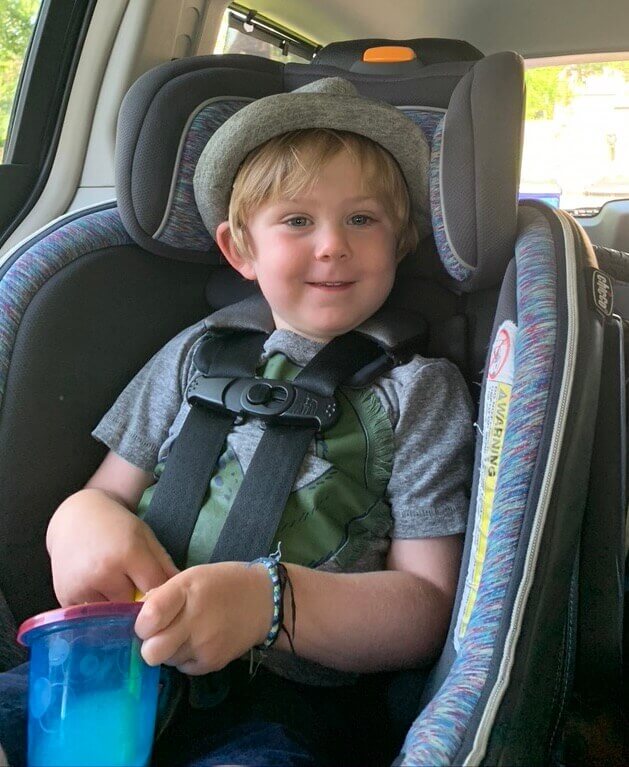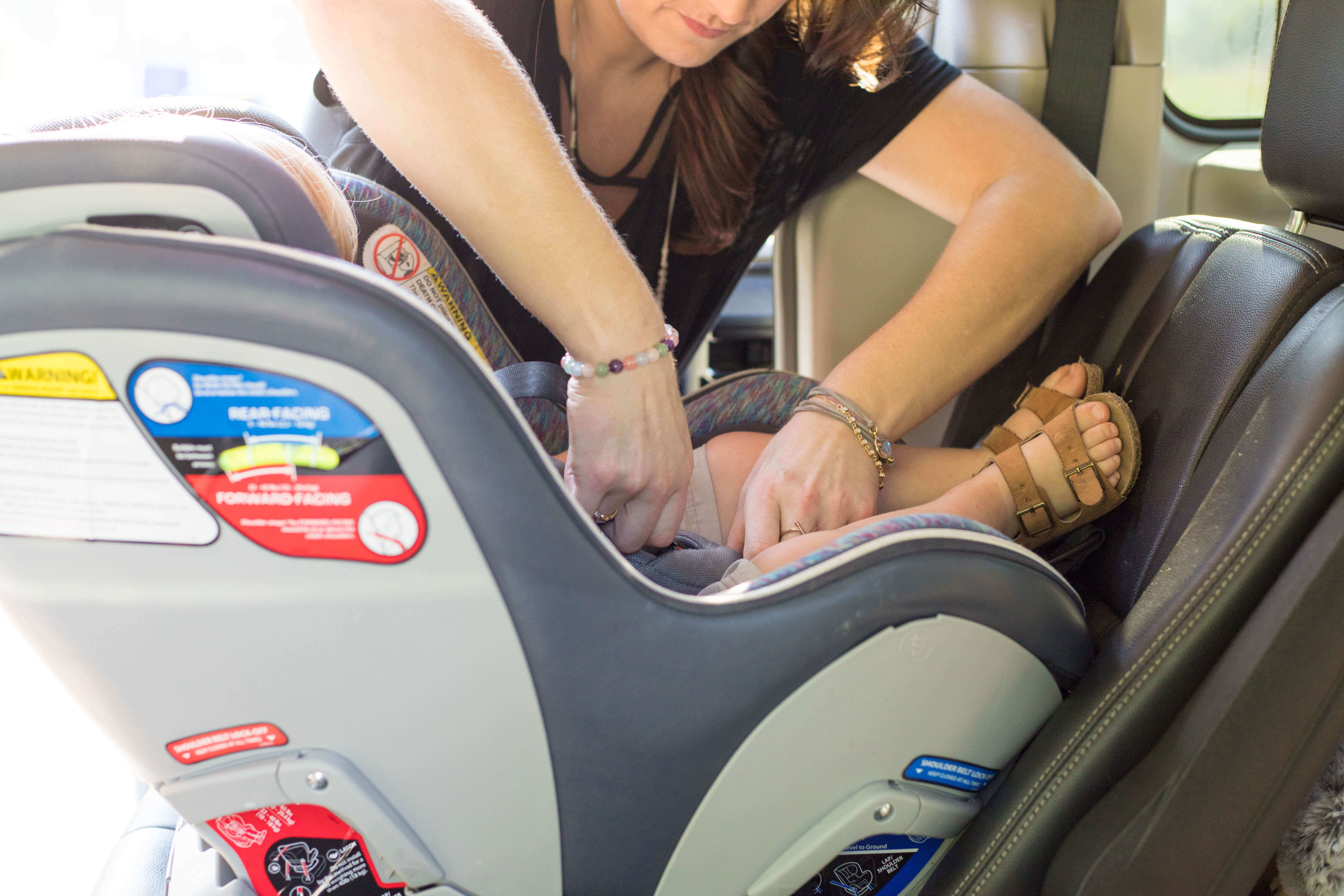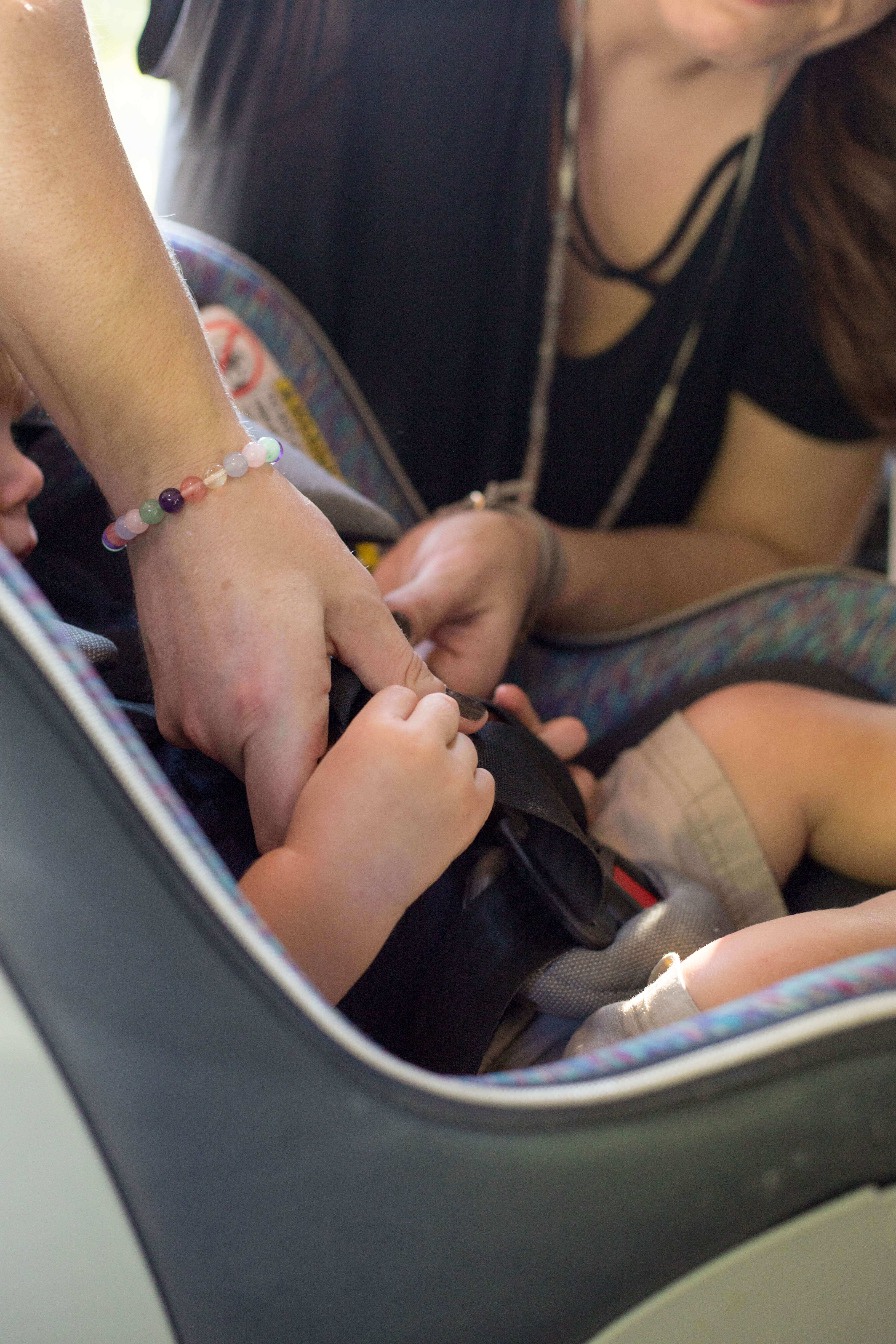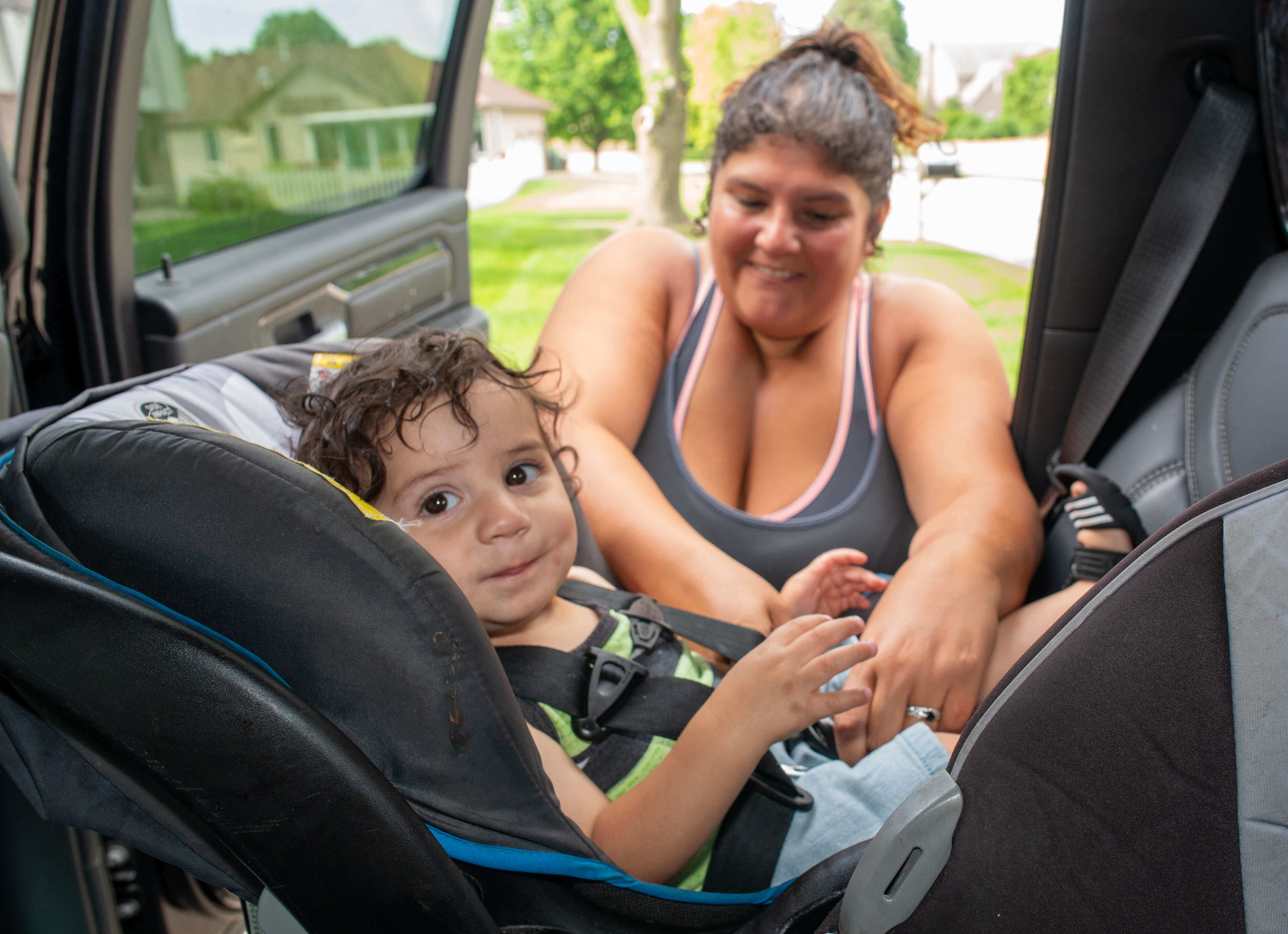Car Seat, Booster, and Seat Belt Use
More than 90% of families arrive at professional car seat checks needing adjustments to their child’s car seat.
Kids and Car Safety recommends getting help choosing and using your car seat from a certified Child Passenger Safety Technician.
Your local Safe Kids, fire department or law enforcement can help you find a Child Passenger Safety Technician to help you.
Safe Ride Helpline for Child Passenger Safety
800-745-SAFE (English) /
800-747-SANO (Spanish)
CLICK HERE to find a local car seat tech (click “Find a Tech” at the top)
ALWAYS register your car seat so you can be notified of important safety recalls.
Keep children in the most protective seat for as long as possible. Every time you move your child to the next stage, it is a demotion of safety.
SEAT BELT USE WHILE PREGNANT
Motor vehicle accidents are the leading cause of, and account for up to 80%, of trauma in pregnancy. It is essential you wear a seat belt during pregnancy. To wear the seat belt properly, the shoulder belt should be midshoulder/midchest and the lap belt should be as low as possible across the hips or safely redirected in a crash-tested pregnancy seat belt positioner. Beware, there are products being sold online that have never been crash tested and may not be safe for use.
Learn more about seat belt use while pregnant
Safe Ride 4 Kids will generously make a donation to Kids and Car Safety for each Tummy Shield pregnancy seat belt purchased at the following link – http://sr4k.com/kidsandcars/
REAR-FACING CAR SEAT: BIRTH – 3 YEARS
Cues for change to forward facing: the child reaches the weight limit of the rear-facing position of the seat OR the child’s head is closer than an inch to the top of the seat plastic. Keep your child rear facing as long as possible.
Purchasing Tip: Consider buying a convertible car seat to use from day 1 instead of a rear-facing-only seat; in most cases you will need a convertible car seat eventually.
Proper use tips:
- Never place baby in front of an active airbag.
- Pinch straps at the shoulder; if snug enough, you should not be able to pinch any fabric between your fingers.
- Chest clip should be at the child’s armpit level.
- Shoulder straps at or below shoulders when rear facing.
- In rear-facing seats, make sure the car seat is reclined at the correct angle. Most car seats have built-in angle indicators and adjustors that help with this step. Be sure your car is on a flat surface when installing.
- The car seat should not touch the back of the vehicle front seat.
- Make sure the seat is tightly installed. It should not move side-to-side or front-to-back more than 1 inch when pulled at the belt path.
- Make sure the top of the safety seat is at least 1-inch above the child’s head, rear facing. Many are adjustable.
FORWARD-FACING CAR SEAT WITH A HARNESS & TETHER: 4-7 YEARS

Keep your child in a forward-facing car seat with a harness and tether.
Cues for change: Your child’s shoulders are above the highest harness slots OR the youngster reaches the top weight limit for the harness allowed by the car seat manufacturer.
Purchasing Tip: Be sure to check the weight limit for the harness; some seats convert to boosters at 40 lbs. When shopping for a seat, look for seats with a harness weight of 50-90 lbs. to keep your child in a harness as long as possible.
Proper use tips:
- Chest clip should be at the child’s armpit level. Pinch straps at the shoulder; if snug enough, you should not be able to pinch any fabric between your fingers.
- Shoulder straps at or above shoulders forward facing.
- Never let the straps slip down on the arms.
- On forward-facing seats: be sure the tether strap is connected to the tether anchor and tightened. This step is very important as it limits forward head movement in a crash.
- Make sure the seat is tightly installed. It should not move side-to-side or front-to-back more than 1 inch when pulled at the belt path.
BOOSTER SEAT: 8-12 YEARS
Keep your child in a booster seat until he or she is big enough to fit in a seat belt properly. Remember, seat belts were designed to fit a 175 lb. male.
Cues for change: Do the 5-step Test to find out if your child is ready for a seat belt only.
- Does the child sit all the way back against the auto seat?
- Do the child’s knees bend comfortably at the edge of the auto seat?
- Does the belt cross the shoulder between the neck and arm?
- Is the lap belt as low as possible, touching the thighs?
- Can the child stay seated like this for the whole trip?
If you cannot answer “yes” to all 5 questions, the child still needs a booster seat.
Common mistakes: Never put two people in one belt. Never put seat belt under arm or behind back. Never use only lap belt with a booster. Keep your child in the back seat at least through age 15.
A few things to remember…
It is very important for everyone in the vehicle to be buckled up correctly. An unbuckled passenger, dog, or any item can strike and seriously injure others in the vehicle during a crash, or even a sudden stop. At 30 mph, each item weighs 30 times its actual weight upon impact!!
Resources to find a car seat inspection in your area:
https://www.nhtsa.gov/equipment/car-seats-and-booster-seats#install-inspection
http://www.nhtsa.dot.gov/cps/cpsfitting/index.cfm.
General Car Seat Resources:
https://www.cdc.gov/motorvehiclesafety/child_passenger_safety/resources.html




